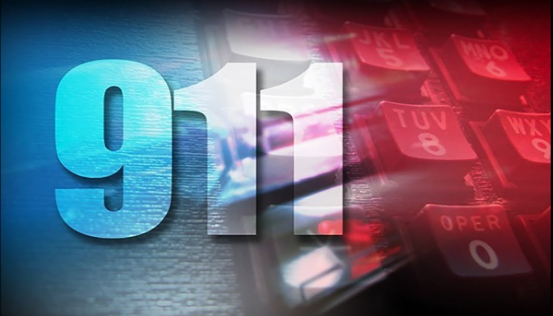 After special meetings on December 13, officials from the Maryville City Council and Nodaway County Commission sign a memorandum of understanding (MOU) to combine the 911 emergency dispatch services into one center to be located at the new Maryville Public Safety facility when completed.
After special meetings on December 13, officials from the Maryville City Council and Nodaway County Commission sign a memorandum of understanding (MOU) to combine the 911 emergency dispatch services into one center to be located at the new Maryville Public Safety facility when completed.
After many meetings of officials this fall, the county and the city of Maryville have agreed to combine the 911 dispatch services of the two entities, process that has been in the works for nearly 30 years. The city initiated the 2019 discussions by proposing a $20,000 study of the proposed consolidation in 2018. The cost was split between the city and county. The consolidation report outlined equipment needs, ongoing operational costs, and recommendations for governance and revenue sources.
Next, the city approached SCG Consulting, previously known as Geo Comm, to design the equipment needs for the proposed center. Bids for the equipment came in at a lower price than was estimated, and are good until December 31.
Background
To better understand the complexity of the issue, the Maryville City Council received this background information from City Manager Greg McDanel during the December 9 Maryville City Council meeting:
“Nodaway County currently utilizes two public safety answer points (PSAP) for the provision of public safety telecommunication services and is home to four law enforcement agencies, 11 township fire districts, and one ambulance service. All 911 calls that originate within the city limits of Maryville are routed to, and answered by, Maryville Public Safety dispatch. At this point, law enforcement and Maryville fire department/Polk township fire service responders are dispatched using pagers, radios and/or phones. All calls requiring ambulance response are transferred to the county.”
“If the call originates outside the Maryville city limits, the call is routed to the Nodaway County 911 center who dispatches for county law enforcement, the remaining 10 fire districts and the Nodaway County Ambulance District, using Emergency Medical Dispatch (EMD) protocol. Appropriate rescue squads are dispatched as necessary. Other communications users include the Northwest Missouri State University Police Department, which provides internal dispatch on campus only and general student assistance. These communication users interact with both PSAPs on a consistent basis.”
MOU vs House Bill 1456
The state legislature approved a bill in 2018 that gives counties the option to charge a monthly subscriber fee, allowing for a maximum monthly fee of $1 per active phone number or device enabled to contact 911 emergency services. Throughout the MOU discussions, officials were eyeing the April Municipal Election; the final MOU does not speak to additional revenue streams at this point. Instead, it is the hope of the officials that combining the two dispatching services will allow for efficiencies.
The MOU is for a period of two years with a review and possible changes to come, as well as the potential for a ballot issue of an additional tax to come in April, 2022. The MOU further states that neither party will place any additional tax on the ballot for the two years.
Both the city and county impose a 15 percent monthly landline telephone tax to aid in the funding of the 911 emergency service, which was approved in 1991 and 1997 respectively. Currently, landlines are seeing 2019 tax revenues of $111.602.15 for the county. The Ambulance District contracts with the county for $68,979 annually while the stewards of the county do account for bank interest of $2,300.11, totalling $182,881.26 for this year. These monies will be put toward the new consolidated service with the city being the direct agent.
Location and equipment
The city is currently constructing a new Maryville Public Safety Facility at the northeast corner of East First and North Vine Street. In accordance with the consolidation study, the project includes space for a consolidated dispatch center. The space is of hardened construction and designed for regional expansion. Construction of the facility is scheduled for completion in August 2020.
Both entities’ dispatching equipment needs to be replaced due to the age. The MOU agrees that the parties will share in the purchase and installation of initial equipment. The city will officially own the equipment. If at the end of the MOU, the entities decide to discontinue the consolidated agreement, the city would pay the county for the equipment at its current value.
To implement the agreement, the city shall prepare a budget for the consolidated 911 dispatch center to be reviewed, revised and approved by the oversight board comprised of city, county and ambulance district representatives. The split-cost share of the budget will be split 51 percent for the city and 49 percent for the county.
Other public safety entities within the region may be brought into the 911 emergency dispatching services in the future.




Facebook Comments